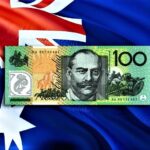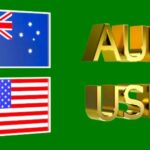Pound sterling falls more against the US dollar following the release of lower than expected UK retail sales statistics for June.
In Friday’s London session, the pound sterling (GBP) extended its decline against the bulk of its peers. The British pound fell further after the Office for National Statistics (ONS) announced lower-than-expected Retail Sales figures for June.
The study showed that monthly retail sales fell at a quicker rate of 1.2%. Economists predicted a 0.4% fall, compared to 2.9% increase in May. Annual receipts at Retail shops fell by 0.2%, despite expectations of continued growth. Except for those who sell automobile gasoline, every retailer experienced a significant drop in sales.
Doubts about the BoE’s decision to start lowering interest rates in August persist.
Retail sales data is an important indication of consumer spending, and a severe decrease implies that families are struggling to shoulder the burden of the Bank of England’s (BoE) higher interest rates. Individuals, on the other hand, may not benefit from greater interest responsibilities in light of the uncertainties surrounding BoE rate cuts in August.
Due to the sticky US core Consumer Price Index (CPI) and tenacious service sector inflation, BoE officials are hesitant to support a step toward policy normalization.
Meanwhile, the predicted slowing of Average Earnings data for the three months ending in May, a crucial measure of pay growth that drives service inflation, fails to raise prospects for BoE rate cuts in August, as the present pace is higher than what is required to keep price pressures under control.
Daily Market movers: Pound Sterling falls, as US Dollar recovers.
The pound sterling falls to around 1.2930 against the US dollar (USD) as the latter recovers strongly after hitting a new nearly four-month low. The US Dollar Index (DXY), which measures the value of the US dollar against six major currencies, has recovered from 103.65 to approximately 104.30.
The US Dollar’s safe-haven appeal grows amid mounting speculation that US President Joe Biden may withdraw his re-election bid. It has triggered positive risks to political uncertainty.
However, the US Dollar’s recovery is unlikely to persist long because traders believe the Federal Reserve (Fed) will reduce interest rates in September as a done thing. Investors expect the Fed to decrease borrowing prices twice this year rather than once, as policymakers indicated in the most recent dot plot.
The uncertainty surrounding the US presidential elections strengthens the US Dollar’s appeal as a safe haven.
Speakers for Friday’s session include New York Fed President John Williams and Atlanta Fed President Raphael Bostic. Investors will look for clues about when the Fed will begin decreasing interest rates.
Meanwhile, Fed officials’ confidence that inflation has returned to the 2% target has increased as US inflation has grown slower than predicted and labor market conditions have eased. Recent CPI In June, yearly headline and core inflation decelerated faster than projected, and monthly headline inflation fell for the first time in more than four years.









